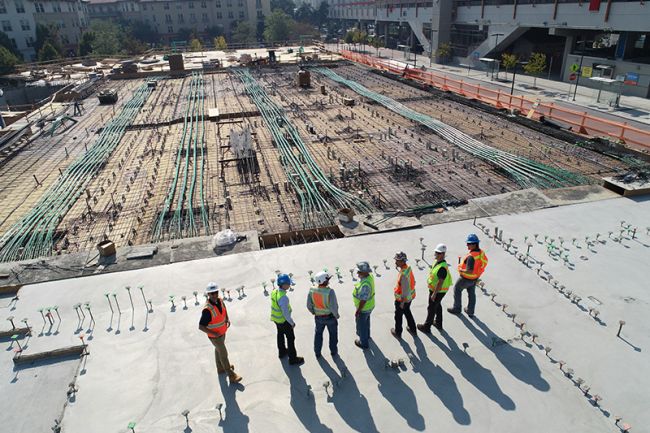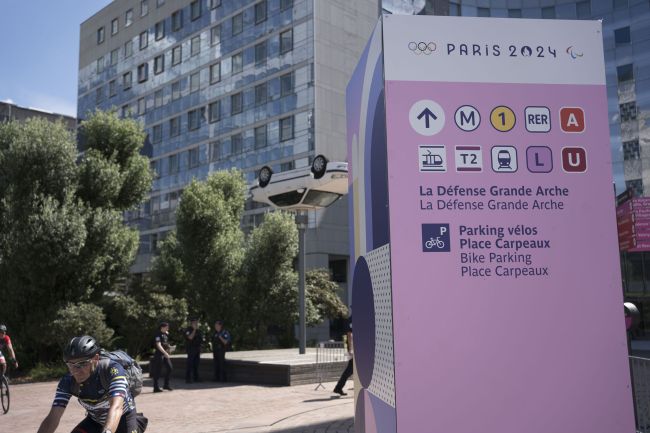How Vancouver and other cities learn to improve transportation decision-making
In 2015, Vancouver’s City Council approved a controversial plan for removing the aging Georgia and Dunsmuir (G&D) viaducts.

In 2015, Vancouver’s City Council approved a plan for removing the aging Georgia and Dunsmuir (G&D) viaducts and replacing 2.6 kilometers of elevated highway with a surface boulevard, parks, public space, and housing. This was a controversial policy decision, evident by a split council vote and some vocal community opposition.
Arguments for removing the viaducts included that they are unnecessary, would require extensive maintenance to make them seismically fit, take up too much land, and act as a physical and visual ’barrier’ that breaks up the urban continuity of Main Street, isolating Chinatown from the successful redevelopment of False Creek. Arguments for keeping the viaducts included that they are an important part of the road network, they may increase traffic on other local roads, and that their removal would result in a small increase in average travel times by automobile. Arguments were also raised to keep the viaducts, but to convert them into a New York ‘High-Line’-style elevated park. Ultimately, City staff and consultants hired by the City recommended near-complete removal of the viaducts. The removal project is anticipated to begin within the next few years.
What happened in Vancouver
There is ample evidence to show that policy transfer (that is, learning from the examples of other cities) played an important role in the planning process that eventually led to the decision to remove the G&D viaducts. Perhaps even more importantly, policy transfer helped to justify the idea of not following traditional North American automobile-centric practices and renewing the G&D viaducts for another 30 years.
For this project, learning from the examples of other cities was done by many different policymakers (including consultants, City staff, and City Councillors) throughout all stages of the planning process. Frequently mentioned examples included San Francisco, with the Embarcadero Freeway removal; Seoul, with the removal of the Cheonggye Expressway; and Toronto, generally used as a negative example, for its failure to remove the Gardiner Expressway when they had the opportunity. Policy transfer was most apparent near the beginning of the policymaking process; during this critical time, the idea to remove the G&D viaduct was first seriously proposed by a City Councillor. That Councillor justified the idea by referring to the San Francisco Embarcadero Freeway removal and the celebrated outcomes of that project. He became the publicly acknowledged champion of the project and was noted for consistently advocating for the project over the years after he initially tabled a motion for City staff to study the proposal in 20091.
Policy transfer can help
The G&D viaducts example tells us that cities do not need to ‘reinvent the wheel’ every time a challenge or opportunity is encountered when there are many interesting and successful examples of completed projects that highlight possible outcomes. If a city is facing a new challenge, chances are good that a similar challenge has been encountered somewhere else from which lessons could be learned.
As consultants, we continually work with cities around the globe and are exposed to hundreds of different projects and policy initiatives dealing with all aspects of city-building and transportation. Because of our experience, advancing controversial ideas is one area where consultants’ knowledge of and our professional networks within other cities can be critically important. While it is unlikely that a policy or project can be directly copied or replicated from another location, as with the G&D viaducts example, a synthesis of ideas and inspiration from other locations can be used to first justify the idea as a good one, and later be used to build a custom-tailored plan.
Urban viewpoints toward adapting or removing modernist mobility infrastructure (like elevated highways) are changing – cities and their inhabitants are learning that it is a worthwhile endeavor to advance equity and justice and to reclaim otherwise underused urban space. However, in many car-centric North American cities, these ideas still tend to be controversial, even in a city generally thought to be progressive like Vancouver. For advancing these controversial ideas, policy transfer can be a powerful and effective tool.
























